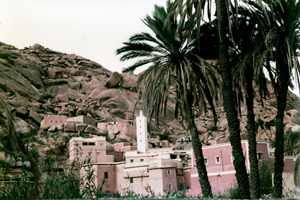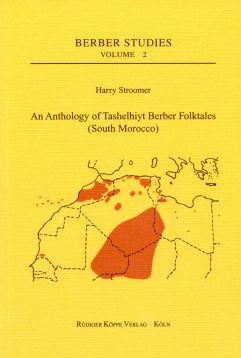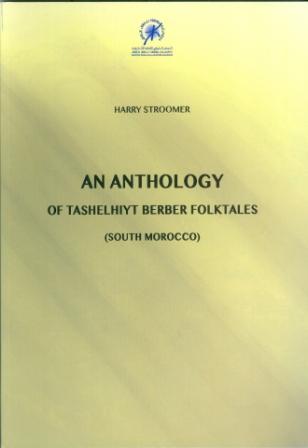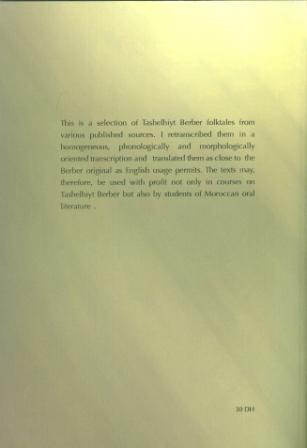





The Berber languages, along with old Egyptian and the Chadic, Cushitic, Semitic as well as Omotic languages, belong to the phylum of Afro-Asiatic languages. At present, Berber languages are found from Egypt (Siwa) across Libya and Algeria to Morocco and from the shores of the Mediterranean Sea to south of the Sahara, see the map on the book covers. Among the Berber languages, Tashelhiyt Berber represents the largest individual language with an estimated 6 to 8 million speakers. It is found geographically in Southern Morocco.
The texts selected for this anthology were gathered and subsequently published over a period of some hundred and fifty years, e.g. by de Slane, Stumme or Roux. These transcriptions varied linguistically to a considerable degree. The aim of this present book is to present these folktales in a modernized version which is phonologically and morphologically adequate and consistent, and includes a full translation in English.
The reader will find the following genres included in this collection: fairy tales, animal stories, funny anecdotes, imam/taleb stories, stories about fools, clever people, clever answers, clever solutions, human relations, oversexed women, stories explaining words or phrases, and stories about (local) saints.
How you can see from the illustrations opposite, the text edition was reprinted unchanged by the IRCAM Institut Royal de la Culture Amazighe, Rabat/Morocco, and by this available in northern Africa.
In addition to this text collection, the following editions with Berber transcription and translation into English or French have been published in this series:
Christian J. Rapold in Journal of African Languages and Linguistics, 26/1, 2005, 108-111
© 2025 by Rüdiger Köppe Verlag – www.koeppe.de